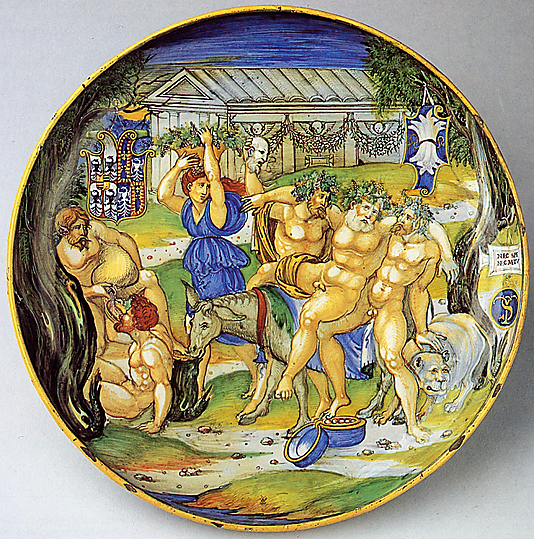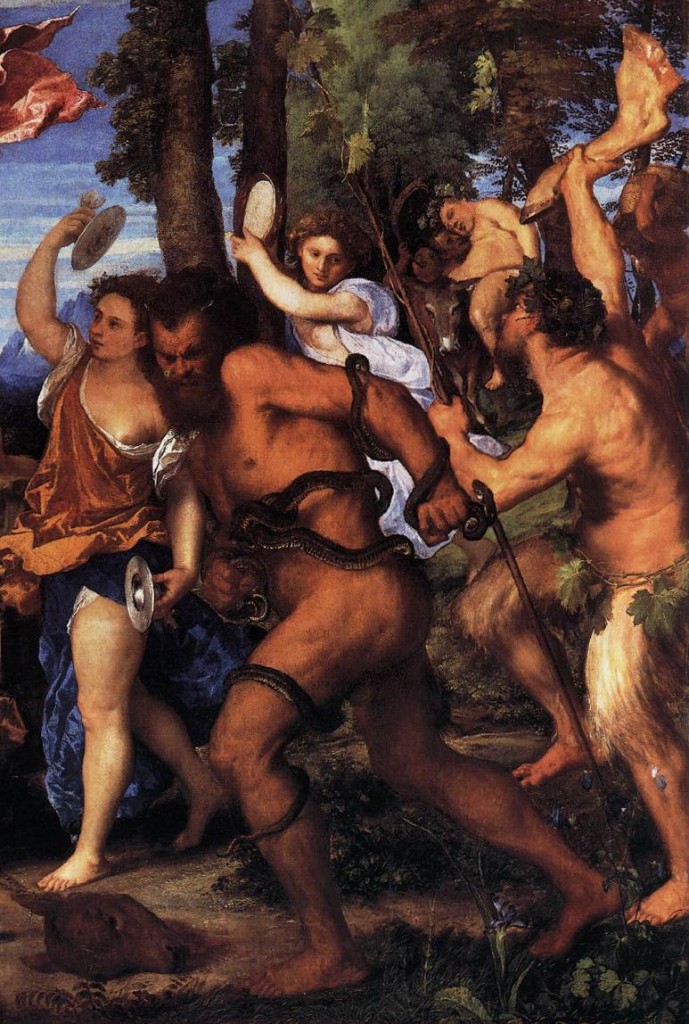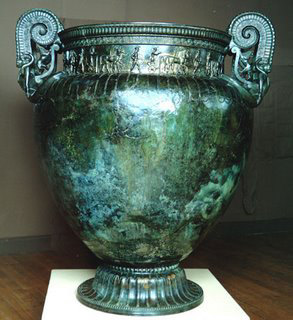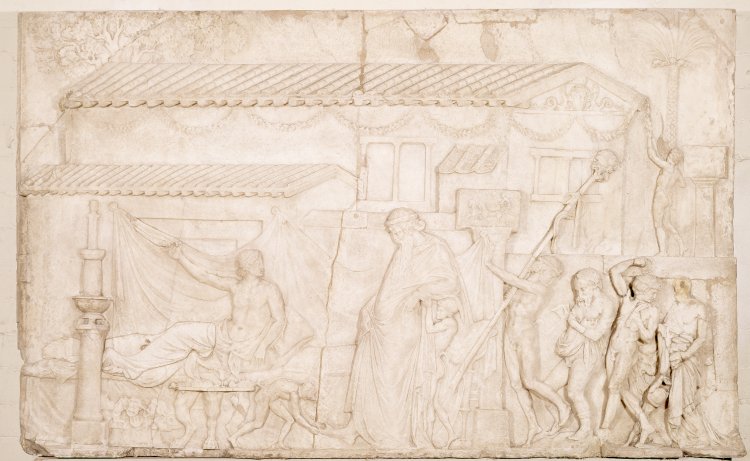By Patrick Hunt

Silenus is one of the most enigmatic characters in Greek Mythology. He can be recognized in art by his visual iconography as old, fat and balding, slumped over while usually riding a donkey, often almost sliding off if not held up by someone – often another satyr [1] – or something. Normally shown as a subsidiary figure in Dionysus stories and representations, named leader of mostly anonymous satyrs and generally overpowered by wine, he is nonetheless often emblematic of some vital knowledge, including being thought sufficiently wise or experienced to be a tutor of the young Dionysus:
“Yet intoxication inspired Silenos’s wine-hazed mind with special knowledge and powers of prophecy.” [2]
The legendary King Midas even thought Silenus was important to kidnap for his philosophy and prophetic power, but Silenus’ pessimistic summation of life was that it would be best never to be born at all. On the one hand, this cynical view might be expected of an old man who knew his weaknesses best and determined himself incapable of self-discipline; on the other hand, this parallels the biblical Proverbs 31:6-7, “give strong drink to one whose life is bitter, give wine to them to forget their misery”. It’s easy to forget that old age always brings pain, yet alcohol in antiquity was one of the gifts for numbing pain relief. Indulging Silenus for being a drunken curmudgeon may not be easy as it sounds so lacking in dignity. But Silenus must have added meaning beyond being a drunk old satyr. What could old Silenus have taught the young Dionysus? One is reminded of Aristophanes’ maxim: “To the thinking person life is a comedy, to the feeling person life is a tragedy.” There is also the uncritical anecdote of Herodotus about the ancient Persians – true or not – who discussed things while filled with wine but then made decisions when sober the next day: if the same conclusions were reached in both states, they knew it was good. [3] In ancient Greek culture nearly everyone knew wine brought joy and an elevated state to a certain point.


Beyond these ancient hints, while the limits of drink were only for the living, in the afterlife one could drink not to oblivion but to fullest joy, hence Dionysus was to some a savior god of more than mere salvific enlightenment [4] and tombs were loaded up with drinking vessels, presumably filled. Along with countless Greek and Etruscan examples, the 6thc. BCE Vix Crater bears this out as a rich grave good, that the Celtic Princess whose giant imported Rhodian krater held over 1000 liters of wine was arriving in the underworld with a bang. Thus drunken old Silenus tottering or slumbering near self-extinction may have somehow been close to salvation in his “enthused” state despite being on wine overload, especially if sleep was understood as the “little death”.
Isabella d’Este’s c. 1537 Maiolica Plate
One of the more intriguing Renaissance renditions of Silenus belonged to Isabella d’Este (1474-1539), Marchesa of Mantua and considered one of the most brilliant intellects of the age, connoisseur and sophisticated patroness of the arts non pareil, fluent in at least five languages and highly Classically trained in Latin. Isabella d’Este especially prized her patronage of mythological scenes in art, [5] as developed here.
One of the most renowned maiolica producers of the time was Nicola da Urbino (1480- c. 1547), who made – among other service ceramics – beautiful plates of highly colored decorative tin-glazed maiolica ware mostly in blues and yellows.[6] Many of these istoriato scenes on this maiolica service depicted Ovid’s Metamorphoses, [7] a text Isabella possessed and knew well. Pictured here (one of 21 surviving service plates in this d’Este collection) is her istoriato Silenus plate, circa 1537-8 and 27.5 cm in diameter, titled Silenus Supported on an Ass, Surrounded by Bacchic Revelers, now at the Metropolitan Museum of Art in New York. Highly erudite in its visual references, it is doubly characteristic of both Isabella as patroness and Nicola as maiolica master. The best and most current reference on this beautifully-dramatic work is Lisa Boutin [8], and I defer to her readings of this plate.
On Nicola da Urbino’s plate white-bearded Silenus rides his donkey, slumped over and held up by two younger satyrs. All three satyrs including Silenus wear grape-filled garlands on their heads. Yet Silenus is seemingly fairly cognizant, unlike most depictions (for example, Titian’s above detail in his c. 1520 Bacchus and Ariadne is fairly typical with a sleeping Silenus although Titian’s is a younger rather than older Silenus). In Isabella’s plate Silenus appears to be glancing at the comedic mask held up by the satyr on his right. Does this comedic mask balance his pessimism or is it merely a reference to a satyr play? In the background is a good representation of a Roman marble “temple” complete with umbrices marble roof tiles (not flat terracotta tegulae) whose pilasters are festooned between them with a marble Roman tabula ansata under the central festoon. The Roman maiolica structure is strikingly similar to the British Museum Townley Marble Dionysian relief of the first century with a festooned building, acquired in 1805 by Charles Townley from Villa Montalto in Tuscany. The marble relief procession is also in some way similar to the Silenus maiolica procession except in the Renaissance maiolica there is no drunken Dionysus as major figure, only Silenus. In the Roman marble relief, bearded Silenus follows the oversize Dionysus in a procession with other satyrs. Since many of her mythology commission feature prior Classical imagery, could Isabella have seen or known this Roman marble relief or a similar one of the myth? [9] Isabella and/or the Gonzagas also owned Roman and Renaissance copy seals with such themes of Silenus and satyrs and the like, so any visual precedent may derive thereby. [10]
As mentioned, Isabella d’Este’s textual sources for Classical stories about Silenus would include Philostratus’ Imagines 1.22 – it is well known she had a copy [11] – and Ovid’s Metamorphoses XI.85 as well as his Fasti III.736 also mention Silenus. Additionally, Virgil’s 6th Eclogue of his Bucolics also tells the Silenus story [12] and as a noted Latinist, Isabella certainly possessed these three other texts as well.
On the maiolica winged amorini or putti heads also decorate the “temple” wall above the festooned spaces. The quartered scudo of Isabella d’Este is on the left; her heraldic motto appears in a Roman tabula ansata hanging in a tree (while the leaves look treelike, the trunk resembles a giant vine) whose epigraphy reads NEC SPE NEC METU (“Without hope, without fear”) on the right. Under the tabula ansata with the motto hangs a connected blue rondel with intertwined yellow YS (for “Isabella”?). Also hanging in the right-hand tree is said to be a lottery bundle of white “tickets” [13] in a blue scudo. Younger satyrs drink disgorged wine through skins under her scudo on the left and a bacchante in blue bears a harvest of grapes in a basket (or Dionysiac mystery kalathos basket). Two mysterious items can only be conjectured here: at the left of the satyr procession strides a tired looking aged lioness. Is the old lioness a trope for Isabella (her husband Francesco II Gonzaga traditionally being the Lion of Mantua)? Note Julia Mary Cartwright Ady’s biography of Isabella as “Lioness of Mantua” [14]). At some point the lioness has been a mother judging by her teats – Isabella gave birth to eight children – and is actually helping to prop up the group of satyrs; immediately underfoot of Silenus is a blue bowl with hinged rim and containing five balls. Other than the last two fairly idiosyncratic items, most of the striking maiolica plate can be read as an antiquarian formula if Nicola da Urbino was following a prescribed commission of Isabella d’Este and if she was keeping to standard Roman iconography.

In conclusion, there are perhaps a few final intriguing questions to ask. Since we know Isabella d’Este requested allegorical paintings and other art works – note she had requested of Bellini that he paint an allegorizing text [15] – is this specific maiolica also a requested allegorical commission given the other Ovidian ekphrases in this set ? Furthermore, did Isabella identify in any way with Silenus since both of them easily exemplified “Without hope, without fear” in their philosophic approach to life and as this maiolica plate would have been made in her very last years. Or, on the other hand, might Silenus in the maiolica plate represent her estranged and deceased husband Francesco II (who died before her in 1519) and thus could either of the other younger satyrs holding up Silenus – however unusually alert, perhaps about to wax prophetic ? – on this maiolica plate represent two of Isabella’s and Francesco’s sons, Federico II Gonzaga, Duke of Mantua, and condottiere Ferrante Gonzaga or Cardinal Ercole Gonzaga? These questions would pertain to and be contingent on whether the aging lioness represents Isabella given her role as one of the leading intellectual forces in Mantua and incomparable patroness of Renaissance interpretations of Classical mythology. That Nicola da Urbino produced this beautiful maiolica service plate is only fitting given their collaboration.
Notes
[1] Robin Hard. The Routledge Handbook of Greek Mythology (Based on H. J. Rose’s Handbook). London & New York: Routledge, 2003, 212.
[2] Jennifer March. The Penguin Book of Classical Myths. London: Penguin, 2008. 102; Mark Morford and Robert Lenardon. Classical Mythology, 8th ed. Oxford: Oxford University Press, 2007, 311.
[3] Herodotus History 1.133
[4] Laszlo Versényi. “Dionysus and Tragedy”. The Review of Metaphysics 16.1 (1962) 92-97, esp. 86; “Dionysus Soter” is also possibility entertained by Wolfgang Liebeschuetz. “Pagan Mythology in the Christian Empire. International Journal of the Classical Tradition 2.2 (1995) 193-208, esp. 203; Helen Cullyer. “A Wind That Blows From Thrace: Dionysus in the 5th Stasimon of Sophokles’ ‘Antigone’ ” Classical World 99.1 (2005) 3-20, esp. 7.
[5] Rose Marie San Juan. “The Court Lady’s Dilemma: Isabella d’Este and Collecting in the Renaissance.” Oxford Art Journal 14.1 (1991) 67-78, esp. 73-4.
[6] for Renaissance Italian maiolica overviews and Nicola da Urbino specifically, note Timothy Wilson’s Ceramic Art of the Italian Renaissance, London: British Museum, 1987 as well as his Italian Maiolica of the Renaissance Milan: Libreria Bocca (1996), the latter commercially available in 2006. Wilson is Keeper of Western Art at Oxford’s Ashmolean Museum and the Ashmolean’s maiolica collection is noteworthy.
[7] W. David Kingery. “Painterly Maiolica of the Italia Renaissance.” Technology and Culture 34.1 (1993) 28-48, esp. 37.
[8] Lisa Boutin. “Isabella d’Este and the Gender Neutrality of Renaissance Ceramics.” Women’s Studies 40.1 (2010); also see Lisa Boutin, Ph.D. dissertation, UCLA. Displaying Identity in the Mantuan Court: the Maiolica Services of Isabella d’Este and Federico II Gonzaga.
[9] See B. F. Cook. The Townley Marbles. British Museum, 1985, 39-40, fig. 38. According to the British Museum, this piece (#1805,0703.123) BM sculpture #2190 from their Townley Collection was collected in 1805 by Charles Townley from the Villa Montalto. The provenance of the marble relief before 1805 is difficult to establish; I await elucidation from Ian Jenkins at the British Museum. Very tenuous connections between Isabella d’Este and Villa Montalto consist in that her husband Francesco Gonzaga had as longterm mistress Lucrezia Borgia, also her sister-in-law, who lived in Rome adjacent to the Vatican with Giulia Farnese – mistress of Alexander VI – whose brother was Bartolomeo Farnese, Lord of Montalto. Thus this present connection is pitifully weak to date. This is not the only marble relief, however, with this theme (visiting Ikarios), possibly derived from a 2nd c BCE [Greek?] original as the British Museum annotates.
[10] Isabella’s collection is mentioned in comparison by Martha A. McCrory, “Some Gems from the Medici Cabinet of the Cinquecento” in The Burlington Magazine 121.917 (1979) 509-15, esp. 512; also for example, note some of Isabella’s famous cameos, intaglios, etc., such as the ‘Gonzaga Cameo’ at the Kunsthistorisches Museum, Vienna, see Nancy Thomson de Grummond, “The Real Gonzaga Cameo”, American Journal of Archaeology LXXVIII. 4 (1974) 427-9; although in one putative example later owned by Sir William Hamilton, see Ian Jenkins and Kim Sloan. Vases and Volcanoes: Sir William Hamilton and His Collection. British Museum Press, 1996, 102 [fig. 51, so-called ‘Mantuan Gem’]; here the Gonzaga / Mantuan provenance is disputed. This 1st-2nd c. Roman sardonyx cameo was copied, however, in the sixteenth century.
[11] Michael Koortbojian and Ruth Webb. “Isabella d’Este’s Philostratos.” Journal of the Warburg and Courtauld Institutes 56 (1993) 260-67; Francis Ames-Lewis. The Intellectual Life of the Early Renaissance Artist, New Haven: Yale University Press, 2000, 200
[12] for a discussion of this Eclogue, see Zeph Stewart, “The Song of Silenus” in Harvard Studies in Classical Philology 64 (1959) 179-205.
[13] noted on the Metropolitan Museum website description about this maiolica plate: http://www.metmuseum.org/collections/search-the-collections/150001263
[14] Julia Mary Cartwright Ady. Isabella D’Este: Lioness of Mantua, 2 vols. New York, 1903.
[15] Ames-Lewis, op. cit., 200